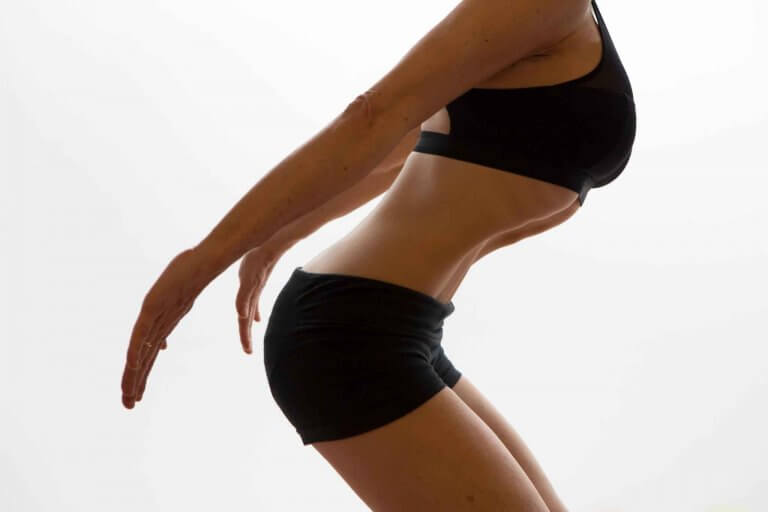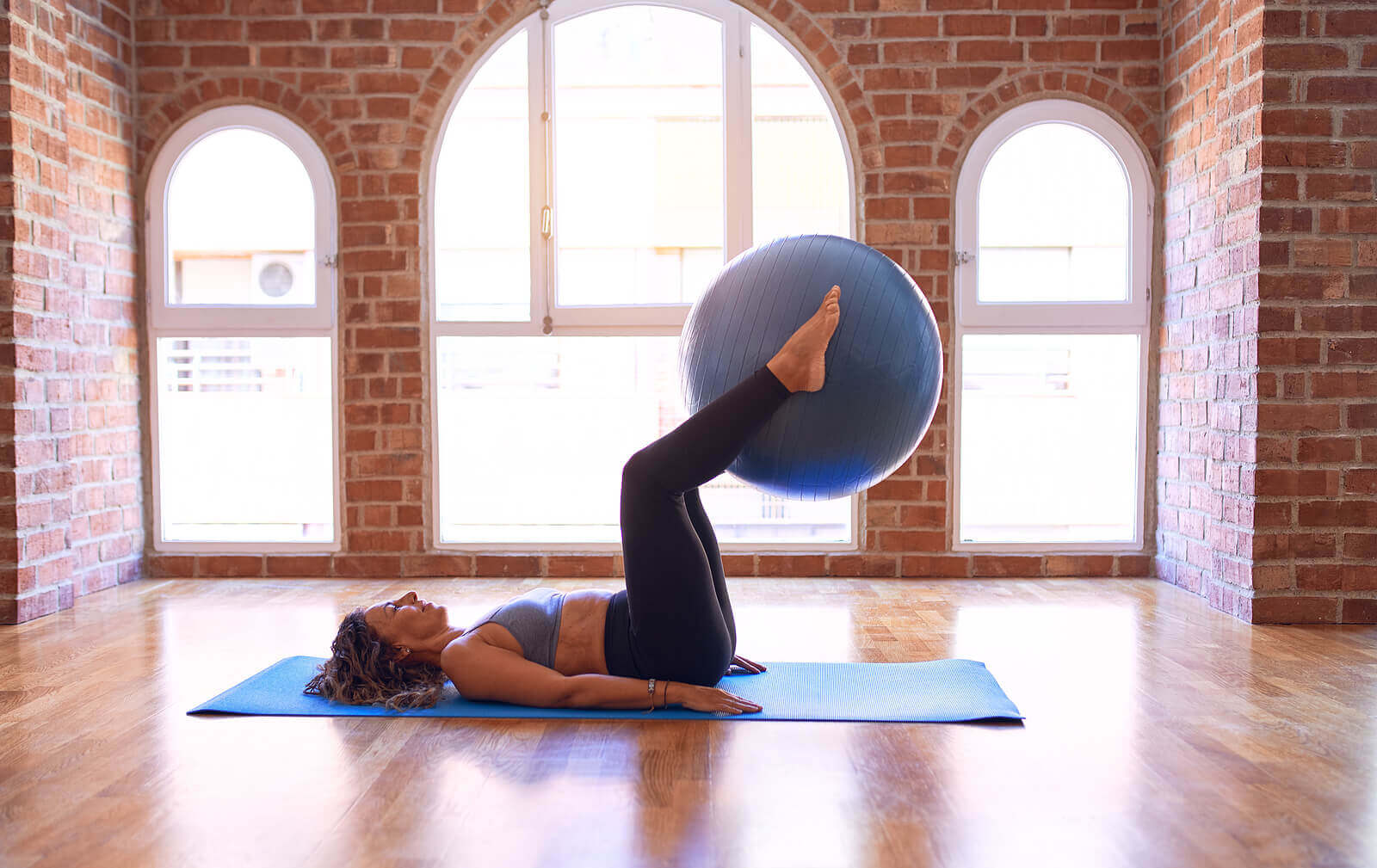Great Abs with the Hypopressive Technique


Reviewed and approved by Doctor Carlos Fabián Avila
The hypopressive technique is a great way to sculpt your abs. When it comes to losing weight, the abdominal area tends to be one of the most difficult parts to work on; more fat tends to accumulate here than in any other part of the body.
People have been coming up with different ab routines for years to tone and lose weight. However, experts on the subject have made it clear that aerobic exercise and a healthy diet are essential for achieving the best results.
We want to strengthen the abdominal wall with exercises specifically focused on this muscle group. With the abdominal hypropressive technique, we can do just that.
What are hypopressive abdominals?
They’re a collection of postures and breathing techniques that will give you excellent results when it comes to reducing and toning the stomach area.
This study conducted in 2017 defines them as exercises that are based on static or dynamic postures that induce responses at the level of postural and respiratory muscle management.
These exercises strengthen the abs and lower back with a technique that involves contracting the diaphragm while holding your breath. This generates inward pressure and activates the pelvic floor and abdominal walls. The difference between this and traditional techniques is in the pressure that’s exerted on the abdominal area and internal organs.
What are the benefits of the abdominal hypopressive technique?

Hypopressive gymnastics is an excellent compliment to the plank and other exercises to work this difficult area. An online study entitled “Review of the Theoretical Foundations of Hypopressive Abdominal Gymnastics” explains that the fitness industry has been constantly searching for innovations and new forms of training.
The need to keep up to date often leads trainers to information about certain training methods that, while they may work in practice, lack a firm theoretical basis. That is to say, the current consensus is that more studies are needed that focus on the benefits of these exercises for the abdomen.
This technique requires a little more effort, but the results are worth it.
Its main benefits include:
- Reduces and tones the stomach.
- Corrects posture and improves balance.
- Tones the abdomino-perineal musculature.
- Reduces stress and anxiety.
- Prevents pubic bone pain, hernias and prolapses (displacement of the organs).
- Reduces lower back pain.
- Strengthens the pelvic floor and control of urinary incontinence.
- Improves physical performance and prevents injury.
How do I do hypopressive exercises for perfect abs?
To do this simple exercise it’s important to understand that they consist of the following steps: starting position, inhalation, holding your breath–during which you try to raise the diaphragm (15-30 seconds)–and exhalation. But for best results, you should change positions during each of the phases.
Starting position
- To begin, stand with your legs shoulder width apart and slightly bend your knees.
- Tilt your torso forward, forming a circle with your arms just as though you were hugging someone.
- Keep your back straight and look straight ahead.
Inhale

- Hold your position and breathe in, trying to expand your chest as much as possible.
- As you feel your stomach go in, concentrate and hold for a few seconds.
Hold your breath
- Maybe the easiest part, but not for everybody. All you have to do during this step is focus on holding your breath for 10 to 15 seconds.
Exhale
- Exhale slowly as you return to a natural position.
- Try to keep a steady rhythm, rest for 20 seconds, then repeat.
You should read: Improve Your Sex Life and Avoid Incontinence with Kegel Exercises
Tips for best results

While this technique has become famous for helping people get the perfect abs, it’s important to understand that it isn’t a miracle cure or magic trick.
For best results with the hypopressive technique, keep the following basics in mind:
- Focus on doing each step properly, maintaining the right posture to prevent injury or other complications.
- If you have any doubts, consult a professional trainer.
- You’ll need to be consistent; this is very important.
- The best time to do them is in the morning. Don’t do these exercises after eating or just before bed.
- You won’t see results with just one day of practice, but after a month you’ll definitely notice a difference.
- You should consult with a nutritionist before starting a diet. They can give advice based on the individual characteristics of each person.
Are you ready for the challenge? Try these exercises using the hypropressive technique at home and combine them with a healthy lifestyle for the perfect abs.
All cited sources were thoroughly reviewed by our team to ensure their quality, reliability, currency, and validity. The bibliography of this article was considered reliable and of academic or scientific accuracy.
- Qué son los abdominales hipopresivos y cómo te ayudan a reducir la cintura – BBC News Mundo. (n.d.). Retrieved February 8, 2019, from https://www.bbc.com/mundo/noticias/2016/02/160209_deportes_en_forma_abdominales_hipopresivos_ejercicios_gimnasia_jmp
- 6 ejercicios de abdominales hipopresivos – El bloc del DiR. (n.d.). Retrieved February 8, 2019, from https://www.dir.cat/blog/es/6-ejercicios-abdominales-hipopresivos/
- Flores, G., & Ucl, V. (2018). Ejercicios hipopresivos: prescripción, técnicas y efectividad. Revista Clínica de La Escuela de Medicina UCR-HSJD.
- Dr. Luis Gómez Pérez; Dr. Emilio José Poveda Pagán (2017). Un protocolo basado en el método hipopresivo puede ser implementado como trabajo muscular coadyuvante en la prevención primaria de las disfunciones de suelo pélvico (España). http://dspace.umh.es/bitstream/11000/4669/1/TD%20Sirvent%20Pinar%2C%20Mar%C3%ADa%20de%20los%20%C3%81ngeles.pdf
This text is provided for informational purposes only and does not replace consultation with a professional. If in doubt, consult your specialist.








